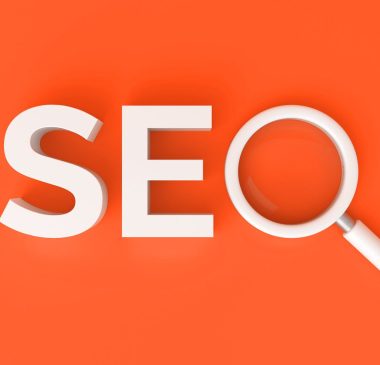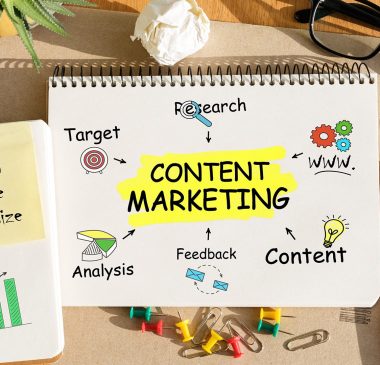Cost Per Click (CPC) is a critical metric in digital marketing that directly influences the financial efficiency of online advertising campaigns. Understanding how various factors affect CPC (cost per click) and implementing strategies to minimize it can significantly enhance campaign performance and return on investment. This blog will delve into the key elements that influence CPC and offer practical advice on reducing these costs effectively.
Understanding Cost Per Click (CPC)
CPC is the price you pay each time a user clicks on one of your ads. It’s a fundamental concept in PPC advertising, where the focus is on optimizing ad spend to maximize user engagement and conversions. An effective CPC strategy ensures that you are not just driving traffic, but traffic that is likely to convert, all while keeping costs manageable.
Factors that Influence CPC
Industry and Competition
The industry you advertise within and the level of competition you face can significantly influence your CPC (cost per click) rates. Highly competitive industries like legal services, insurance, and finance typically see higher CPCs due to more advertisers bidding for the same keywords.
Example: The average CPC (cost per click) in the legal industry might be much higher than in the hospitality industry due to more competitive bidding and higher value per conversion.
Quality Score
Google Ads uses the Quality Score as a metric to determine the relevance and quality of your ads and keywords. It’s composed of several factors:
- Ad Relevance: How closely your ad matches the intent behind a user’s search.
- Landing Page Experience: The usability and relevance of your landing page.
- Click-Through Rate (CTR): The frequency with which people click your ad after seeing it.
A higher Quality Score can lead to lower CPCs as it signals to Google that your ad is valuable to users.
Ad Targeting and Placement
Your targeting settings can also impact CPC (cost per click). Ads targeted to high-income regions or specific demographics may incur higher costs. Moreover, ad placements across different platforms and devices vary in cost due to differing audience engagement levels.
Ad Content and Creativity
Creative content that resonates with your audience can improve engagement rates and reduce your CPC (cost per click). An ad that stands out is more likely to garner clicks, which can improve your ad’s performance and lower costs over time.
Seasonality and Timing
Ad costs can fluctuate based on the time of day, day of the week, and season. Understanding these patterns can help you time your ad campaigns to when CPC (cost per click) is typically lower, yet the potential for customer engagement is high.
Strategies to Reduce CPC (cost per click)
Improving Quality Score
To improve your Quality Score, focus on the following:
- Optimize Ad Relevance: Make sure your ads closely match the search queries you target.
- Enhance Landing Page Quality: Improve the user experience and relevance of your landing pages.
- Conduct A/B Testing: Regularly test different elements of your ads to find what works best and improve CTR.
Keyword Optimization
Effective keyword management is crucial for maintaining low CPCs:
- Use Long-Tail Keywords: These are less competitive and more specific, often leading to lower costs and higher conversion rates.
- Implement Negative Keywords: Filter out irrelevant traffic by adding non-converting terms as negative keywords.
Smart Bidding and Budget Allocation
Google’s Smart Bidding strategies can automate your bidding process to optimize for conversions while managing costs:
- Target CPA: Sets bids to help get as many conversions as possible at the target cost-per-acquisition you set.
- Enhanced CPC: Adjusts your manual bids to help you get more conversions, potentially lowering your overall CPC.
Ad Scheduling and Geo-targeting
- Ad Scheduling: Run ads during hours or days when your audience is most active but CPC is lower.
- Geo-targeting: Focus on specific geographic locations where you can gain more for your advertising dollar.
Continuous Monitoring and Analytics
Regularly review your campaign’s performance to identify areas where you can cut costs without sacrificing results. Use analytics tools to track which ads perform best and adjust your strategies accordingly.
Conclusion
By understanding the factors that influence CPC (cost per click) and implementing strategic measures to reduce it, advertisers can enhance their PPC advertising efficiency. Regular optimization and adaptation to the evolving digital landscape are key to maintaining competitive ad campaigns.
Call to Action
We hope this guide helps you optimize your ad campaigns effectively. If you have any tips or experiences you’d like to share about managing CPC, please comment below! For more personalized advice, consider reaching out to a professional PPC management service.
FAQs
What makes CPC high?
Several factors can lead to a high CPC in PPC advertising campaigns:
- High Industry Competition: More competitors bidding on the same keywords can drive up costs.
- Keyword Demand: High-demand keywords are more expensive due to increased bidding activity.
- Low Quality Score: Google Ads rewards higher quality scores with lower CPC. A low quality score due to poor ad relevance, landing page experience, or click-through rate can increase CPC.
- Targeting Broad Markets: Targeting large, general audiences or high-income areas can also result in higher costs.
- Seasonal Trends: During peak times or seasons, CPC can increase as more businesses compete for visibility.
How do I increase my max CPC?
To increase your maximum CPC:
- Adjust Bid Settings: In your ad platform’s campaign settings, manually increase the maximum bid amount for your CPC.
- Evaluate Performance: Regularly review the performance of your campaigns. If certain keywords or ads are performing well but could gain more traffic, consider raising the max CPC to capture more volume.
- Use Bid Adjustments: Implement bid adjustments for demographics, devices, or locations that are performing well to allocate more budget toward these high-performing areas.
How to get better CPC?
To achieve a better (lower) CPC in your ad campaigns, consider the following strategies:
- Improve Your Quality Score: Optimize your ads and landing pages to be as relevant and high-quality as possible. Focus on increasing your click-through rate (CTR) by creating compelling ad copy.
- Use More Specific Keywords: Incorporate long-tail keywords that are less competitive but still relevant to your audience.
- Add Negative Keywords: Regularly update your negative keyword list to avoid wasting budget on irrelevant or non-converting traffic.
- Optimize Ad Scheduling: Run ads during times when your audience is most active but competition is lower.
- Refine Your Targeting: Narrow your targeting to focus on the most profitable segments of your audience to reduce wasted impressions and clicks.
How to calculate CPC (cost per click)?
CPC (cost per click) can be calculated using a simple formula:
CPC = Total Cost of Your Ad Campaign / Number of Clicks
This calculation gives you the average cost for each click on your ads. It helps in budgeting and understanding the efficiency of your advertising spend.
What does CPC stand for?
CPC stands for “Cost Per Click.” It is a billing model used in digital advertising where advertisers pay each time a user clicks on one of their online ads. This model is widely used in search engine advertising, social media advertising, and other forms of digital marketing where direct engagement is measurable.
































